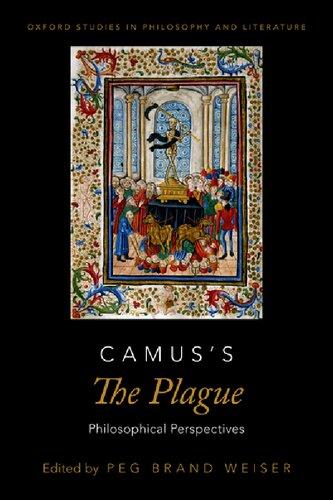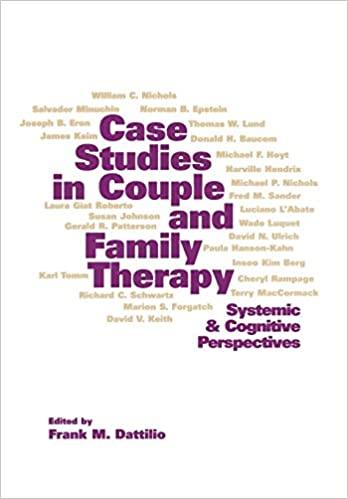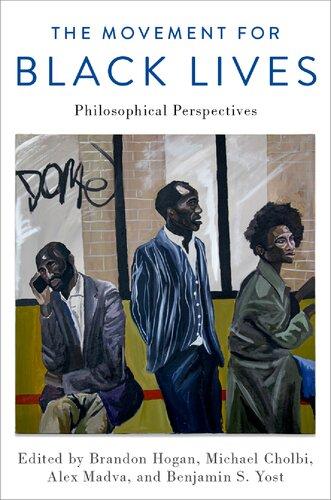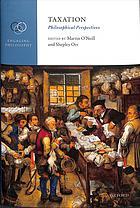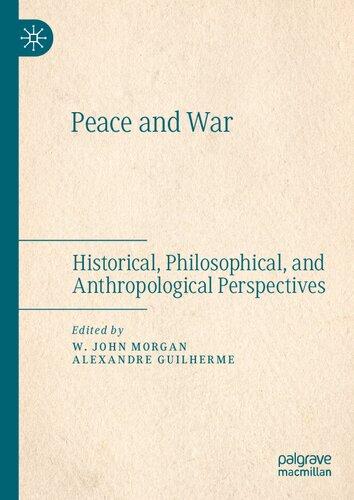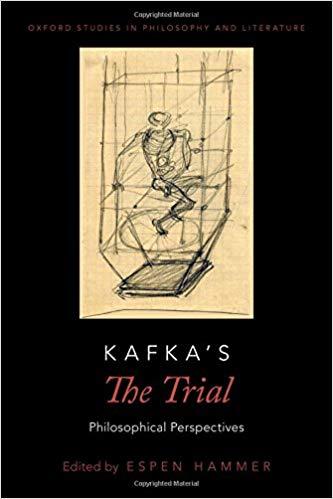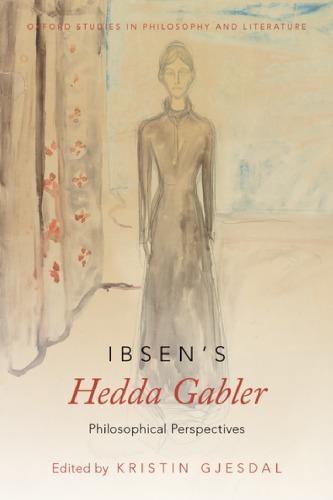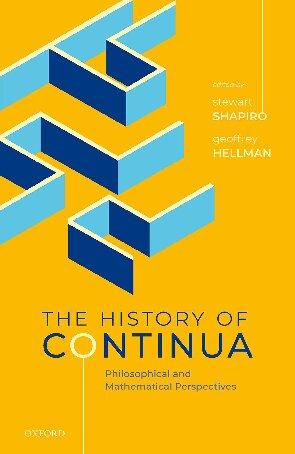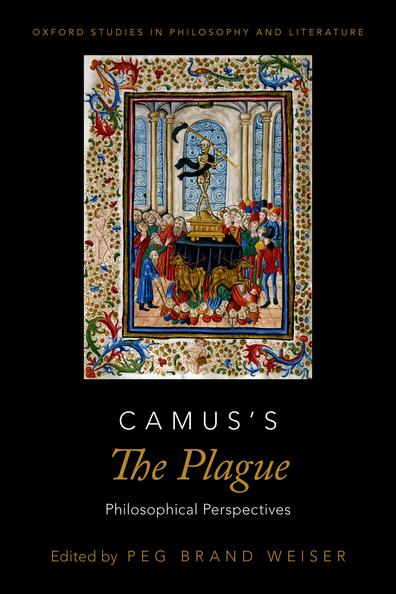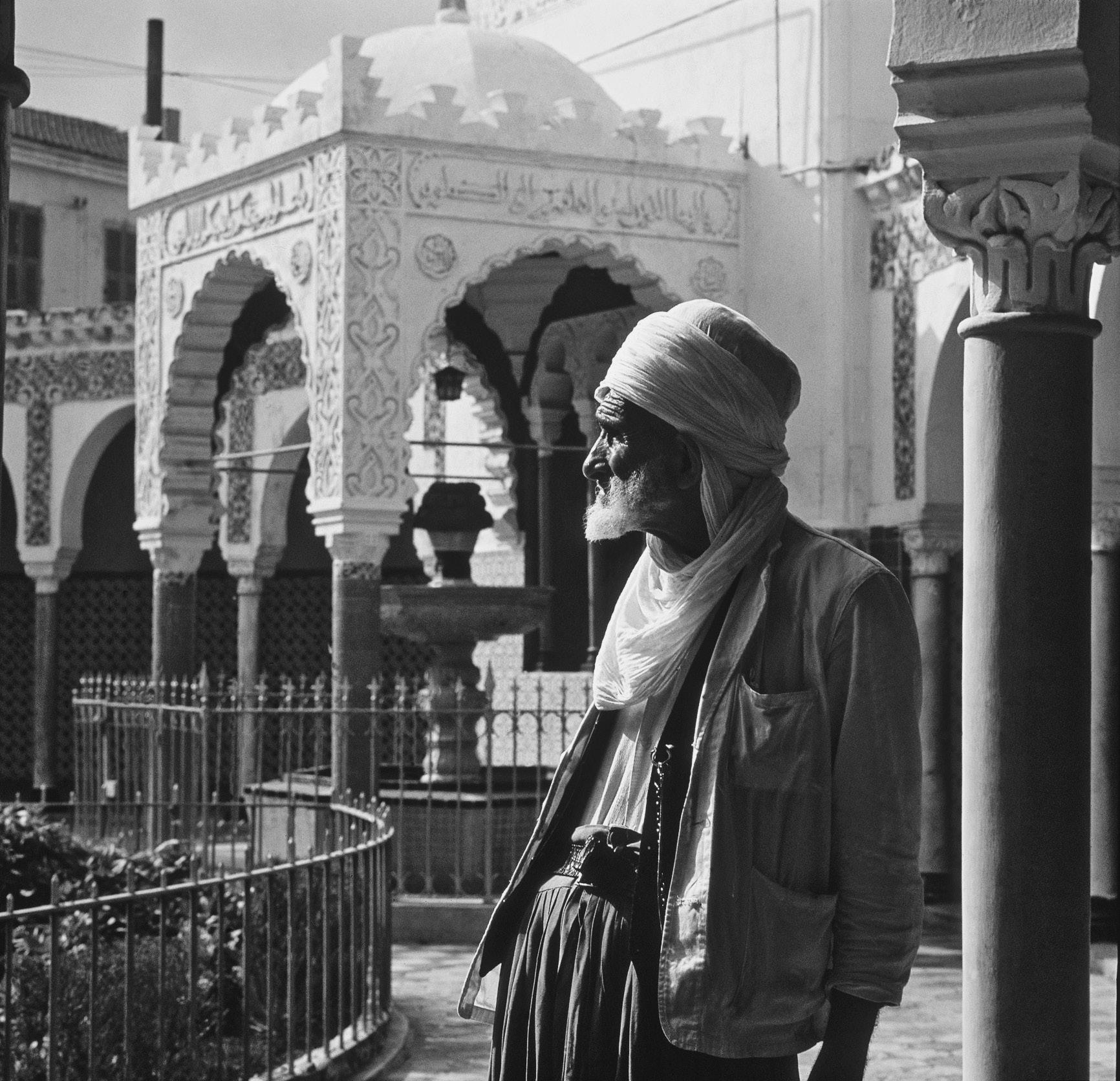Camus’s Te Plague
Philosophical Perspectives
EDITED BY PEG BRAND WEISER
Oxford University Press is a department of the University of Oxford. It furthers the University’s objective of excellence in research, scholarship, and education by publishing worldwide. Oxford is a registered trade mark of Oxford University Press in the UK and certain other countries.
Published in the United States of America by Oxford University Press 198 Madison Avenue, New York, NY 10016, United States of America.
© Oxford University Press 2023
All rights reserved. No part of this publication may be reproduced, stored in a retrieval system, or transmitted, in any form or by any means, without the prior permission in writing of Oxford University Press, or as expressly permitted by law, by license, or under terms agreed with the appropriate reproduction rights organization. Inquiries concerning reproduction outside the scope of the above should be sent to the Rights Department, Oxford University Press, at the address above.
You must not circulate this work in any other form and you must impose this same condition on any acquirer.
Library of Congress Cataloging-in-Publication Data
Names: Weiser, Peg Brand, author.
Title: Camus’s Te plague : philosophical perspectives / edited by Peg Brand Weiser. Description: New York, NY : Oxford University Press, [2023] | Series: Oxford studies in philosophy and literature | Includes index. Identifers: LCCN 2022038837 (print) | LCCN 2022038838 (ebook) | ISBN 9780197599334 (paperback) | ISBN 9780197599327 (hardback) | ISBN 9780197599358 (epub)
Subjects: LCSH: Camus, Albert, 1913-1960. Peste. | Philosophy in literature. | Epidemics in literature. | LCGFT: Literary criticism. | Essays. Classifcation: LCC PQ2605 .A3734 P4394 2023 (print) | LCC PQ2605 .A3734 (ebook) | DDC 843/.914—dc23/eng/20220916
LC record available at https://lccn.loc.gov/2022038837
LC ebook record available at https://lccn.loc.gov/2022038838 DOI: 10.1093/oso/9780197599327.001.0001
1 3 5 7 9 8 6 4 2
Paperback printed by Marquis, Canada
Hardback printed by Bridgeport National Bindery, Inc., United States of America Triumph of Death.
From: Francesco Petrarca, “I Trionf” (Te Triumphs). Miniature. Neapolitan School, 1449–1460 Tempera and gold on parchment. Ms. It. 103 alfa W 925, Folio 30v Alfredo Dagli Orti / Art Resource, NY
This volume is dedicated to the millions of lives lost from Covid-19, to those who tried to save them, and to the loved ones left behind.
Because I could not stop for Death—
He kindly stopped for me—
Te Carriage held but just Ourselves—
And Immortality.
We slowly drove—He knew no haste
And I had put away
My labor and my leisure too, For His Civility—
We passed the School where Children strove
At Recess—in the Ring—
We passed the Fields of Gazing Grain—
We passed the Setting Sun—
Or rather—He passed us—
Te Dews drew quivering and Chill—
For only Gossamer, my Gown—
My Tippet—only Tulle—
We paused before a House that seemed A Swelling of the Ground—
Te Roof was scarcely visible —
Te Cornice—in the Ground—
Since then—‘tis Centuries—and yet Feels shorter than the Day
I frst surmised the Horses’ Heads Were toward Eternity—
Emily
Dickinson (1830–1886)
Series Editor’s Foreword ix
Acknowledgments xiii
Contributors xv
Introduction: The Relevance of Camus’s The Plague 1
Peg Brand Weiser
1. The Plague and the Present Moment 31
Steven G. Kellman
2. Present in Effacement: The Place of Women in Camus’s Plague and Ours 53
Jane E. Schultz
3. The Meaning of a Pandemic 77
Andrew Edgar
4. Grief and Human Connection in The Plague 103
Kathleen Higgins
5. Examining the Narrative Devolution of the Physician in Camus’s The Plague 127
Edward B. Weiser
6. Horror and Natural Evil in The Plague 147
Cynthia A. Freeland
7. “I Can’t Breathe”: Covid-19 and The Plague’s Tragedy of Political and Corporeal Suffocation 175
Margaret E. Gray
8. Modern Death, Decent Death, and Heroic Solidarity in The Plague 199
Peg Brand Weiser
Index 225
Acknowledgments
Te idea frst came to me during spring break in March 2020 when in-person teaching on campus was delayed one week, then two, then for the rest of the semester. No one had any idea how long the “temporary” situation would last. We hardly thought it would be two years with still no end in sight to the interruption of normal activities in our lives. Too many deaths have occurred. Too much pain and sufering and political posturing. To write about Camus’s Te Plague during a pandemic seemed both logical and urgent.
My sincere thanks to Richard Eldridge, Series Editor of the Oxford University Press Philosophy and Literature series—good friend and colleague in the American Society for Aesthetics—for his support and insightful suggestions. Tanks also to Lucy Randall, Commissioning Editor at Oxford University Press, New York, and her Production Team.
I am indebted to the students of my two classes in Philosophy in Literature at the University of Arizona who learned about plagues in history and defly analyzed fctional Oran. Teir strength in studying subject matter that could easily have eroded one’s confdence in human nature as the pandemic wore on and on attested to their hope in solidarity: Camus’s message to us all.
Finally, my husband, Ed Weiser—one of the authors in this volume—has been steadfast throughout. As a retired gynecologic oncologist and surgeon, he has seen illness and death up close. His understanding of the uncontrollable force of nature known as Covid-19 has sustained and inspired me. I thank him for navigating a worldwide catastrophe . . . at my side.
Contributors
Andrew Edgar is Reader Emeritus at Cardif University, where he was a member of the School of English, Communication and Philosophy. He is an honorary staf member of Swansea University’s School of Sport Science. His research interests include critical theory, the philosophy of art, and the philosophy of sport. He is the author of two books on Jürgen Habermas’s philosophy and social theory, Te Philosophy of Habermas (2005) and Habermas: Key Concepts (2006). He is currently editor of the journal Sport, Ethics and Philosophy, and he published a monograph of the aesthetics of sport entitled Sport and Art: An Essay in the Hermeneutics of Sport (2014). Most recently, he edited Somaesthetics and Sport (2022).
Cynthia A. Freeland is Professor Emerita of Philosophy at the University of Houston. She has published on topics in ancient philosophy, feminist philosophy, flm theory, and aesthetics. Her books include Philosophy and Film, coedited with Tomas Wartenberg (Routledge, 1995), Feminist Interpretations of Aristotle (Penn State Press, 1998), Te Naked and the Undead: Evil and the Appeal of Horror (Westview Press, 1999), But Is It Art? (Oxford University Press, 2001), and Portraits and Persons (Oxford University Press, 2010). From 2014 to 2016, she served as president of the American Society for Aesthetics.
Margaret E. Gray is an Associate Professor in the French and Italian Department at Indiana University, Bloomington. She has published on Proust (Postmodern Proust, 1992) and such authors as George Sand, Colette, Camus, Simone de Beauvoir, Beckett, Jean-Philippe Toussaint, Calixthe Beyala, and Noémi LeFebvre. Most recently, she published Stolen Limelight: Gender, Display, and Displacement in Modern Fiction in French (University of Wales Press, 2022).
Kathleen Higgins is Professor of Philosophy at the University of Texas at Austin, where she specializes in aesthetics, continental philosophy, and philosophy of emotion. Her primary research interests in aesthetics include philosophy of music, emotion and the arts, beauty, popular culture,
kitsch, and non-Western aesthetics. She is author of many articles related to these topics as well as a several books, including Te Music of Our Lives (1991; rev. ed. 2011) and Te Music between Us: Is Music the Universal Language? (2012). She is also coeditor of A Companion to Aesthetics (2nd ed., 2009) and Artistic Visions and the Promise of Beauty: Cross-Cultural Perspectives (2017). She is a former delegate-at-large in the International Aesthetics Association and a former president of the American Society for Aesthetics.
Steven G. Kellman is Professor of Comparative Literature at the University of Texas at San Antonio. His books include Rambling Prose: Essays (Trinity University Press, 2020); Nimble Tongues: Studies in Literary Translingualism (Purdue University Press, 2020); Te Restless Ilan Stavans: Outsider on the Inside (University of Pittsburgh Press, 2019); Redemption: Te Life of Henry Roth (Norton, 2005); Te Translingual Imagination (University of Nebraska Press, 2000); Te Plague: Fiction and Resistance (Twayne, 1993); Loving Reading: Erotics of the Text (Archon, 1985); and Te Self-Begetting Novel (Columbia University Press, 1980). Kellman served four terms on the board of the National Book Critics Circle and received its Balakian Citation for Excellence in Reviewing.
Jane E. Schultz is Professor of English, History, and Medical Humanities at Indiana University in Indianapolis and coeditor of Manchester University’s Nursing History and Humanities book series. Women at the Front: Hospital Workers in Civil War America (University of North Carolina Press, 2004)—a fnalist for the Lincoln Prize—and Tis Birth Place of Souls (Oxford University Press, 2011) concern nursing and relief work in wartime military hospitals. Schultz published a new edition of Sarah Edmonds’s Nurse and Spy in the Union Army (Lakeside Press, 2019) and was historical consultant for the PBS drama Mercy Street from 2014 to 2017. She continues to chip away at Lead, Blood, and Ink a study of the relationship between wartime surgical language and practice. In addition to her work as board president of the Indiana Medical History Museum, which houses one of the last remaining nineteenth-century surgical amphitheaters in the United States, she has written widely on cancer memoirs and other kinds of illness narratives.
Edward B. Weiser is a board-certifed obstetrician-g ynecologist and gynecologic oncologist who has held medical school appointments at Uniformed Services University, Upstate Medical University of New York,
Emory University, Mercer University, and Indiana University. Afer retiring from over thirty years of clinical practice, he is now Professor of Practice teaching medical ethics, a career-long parallel pursuit at the University of Arizona in the Philosophy Department and the W.A. Franke Honors College.
Peg Brand Weiser is Laureate Professor and Research Professor of Philosophy at the University of Arizona who teaches in the W.A. Franke Honors College. She is afliated with the Gender and Women’s Studies Department and the Applied Intercultural Arts Research graduate program (AIAR). She is also Emerita Associate Professor of Philosophy and Women’s Studies at Indiana University. Editor of Beauty Unlimited (Indiana University Press, 2013) and Beauty Matters (Indiana University Press, 2000), she recently guest coedited a Special Issue of the Journal of Intercollegiate Sport (2021) and published an essay in Somaesthetics and Sport (Brill Press, 2022). She is coauthor with Carolyn Korsmeyer of “Feminist Aesthetics” in the Stanford Encyclopedia of Philosophy (2021).
1. Argelino Con Turbante [Algerian with Turban] En El Patio De La Mezquita, Oran, Algeria. Album/Art Resource, NY.
Te Relevance of Camus’s Te Plague
Peg Brand Weiser
[T]here’s no substitute for fnally sitting down and reading the 1947 novel “Te Plague,” by Albert Camus. Its relevance lashes you across the face.”1
Camus’s classic narrative La Peste (Te Plague)2 is a timely philosophical read in an era when a deadly pandemic rages worldwide. An allegory rich with suggestion, it rewards an imaginative reader with innumerable meanings as our own lived experiences mirror the novel. We witness protesters who argue for individual freedom and the autonomy to defy government-imposed regulations. Tey openly clash with followers of science who recommend shared actions of self-sacrifce to mitigate the spread of infection. Choosing either to act in one’s own interest or to sacrifce for the good of all has become a haunting theme of American life in which the “richest nation on earth” experienced the highest number of cases and deaths in the world while under the leadership of former president Donald Trump as well as through the frst
1 Metcalf, “Albert Camus’ ‘Te Plague’ and Our Own Great Reset,” March 23, 2020.
2 Camus’s La Peste was published in French in 1947, and as Te Plague, in English, in 1948.
Camus’s The Plague. Peg Brand Weiser, Oxford University Press. © Oxford University Press 2023.
DOI: 10.1093/oso/9780197599327.003.0001
year, 2021, of the administration of President Joe Biden.3 Political divisions over wearing masks, social distancing, police killings, Black Lives Matter, the January 6, 2021, assault on the United States Capitol, and recommended or mandated vaccines sow discord at a time when solidarity could have united the United States to lead the world against the pandemic. Instead, misinformation campaigns have stoked opposition among the populace and away from the virus. “We’re all in this together,” was repeatedly uttered by Dr. Bernard Rieux, Camus’s narrator. How seldom did we hear that call for unity from the podiums of power, for example, the leaders of America, Brazil, and India (the three countries with the highest death counts in the world)? Afer two years into the coronavirus pandemic with over 1 million deaths in the United States and over 6 million worldwide, we might ask ourselves, do we measure up to Camus’s optimistic assessment of human behavior under duress? Do we collectively meet the minimum threshold of ethical behavior posed by Camus who wrote, “What’s true of all the evils in the world is true of plague as well. It helps men to rise above themselves”?4
His Life and Work
Albert Camus was born on November 7, 1913, in Mondovi, Algeria. As a pied noir (black foot), he was the second-generation ofspring of European colonists who settled in North Africa from 1830 until the 1960s, when indigenous independence was regained afer the Algerian War of 1954–1962. Unlike Arab and Berber inhabitants, he was born a French citizen: a unique status. He was described by one scholar, Stephen G. Kellman, as both “a stranger in his native land” and “a ragged interloper among the literary sophisticates of Paris.”5
3 Bassett and Linos, “Trump Gave Up on Fighting the Virus,” July 14, 2020. See also World Health Organization (WHO) Coronavirus (COVID-19) Dashboard, July 4, 2022.
4 Camus, Te Plague, 125.
5 Kellman, “On Albert Camus,” 4.
His father, killed in World War I in 1914, prompted his Spanish mother (born deaf) to relocate him and his older brother (born deaf-mute) to an apartment in Algiers where they lived with three other persons without electricity or running water. Diagnosed with tuberculosis at age seventeen, a transmitted disease for which there was then no cure nor satisfactory treatment, he was forced to leave home and live in self-imposed quarantine with an uncle.
A lycée professor infuenced him to study philosophy, particularly the ancient Greeks and Nietzsche. Forced to abandon his love of swimming and aspirations of becoming a professional football player, he relinquished the position of goalkeeper for a local team, later remarking, “What little I know on morality, I learned it on football pitches and theater stages. Tose were my true universities.”6
Beginning in 1933, he studied philosophy at the University of Algiers and completed his studies (equivalent to a master’s degree) in 1936 with a thesis on Plotinus. First married in 1934 and divorced in 1936, he wrote theatrical works and traveled Algeria as an actor. He visited Paris for the frst time in 1937, where he wrote for several socialist newspapers, and in 1940 moved to Paris to become editor-in-chief of Paris-Soir. As the buildup to World War II intensifed, he attempted to join the army but was rejected due to his illness. As Germany invaded Paris, he fed to Lyon, married again in 1940, and by 1942 had published Te Stranger, Te Myth of Sisyphus, and Caligula. He and his wife moved to Oran where he taught in primary schools, but due to a recurrence of tuberculosis, he moved again in 1942 to a mountain village in the French Alps where he began writing La Peste. Stranded in France, he was separated from both his wife and mother who were back in Algeria. In 1943, he returned to Paris to edit the underground newspaper Combat as part of the French Resistance. In 1944, he met Jean-Paul
6 Mezahi, “Goalkeeper, Philosopher, Outsider,” November 7, 2013. Speculation is that Camus might have become a professional football player.
Sartre, André Gide, Simone de Beauvoir, André Breton, and, since he was already well-known, easily assimilated into the group of French intellectuals living in Paris. In Paris afer the war in 1945, his wife gave birth to twins, and in 1946, as a celebrated writer, he visited the United States and Canada, delivering a speech at Columbia University and publishing a series of essays from Combat entitled “Neither Victims nor Executioners.”
La Peste was published in 1947 and translated into English the following year. He continued to write, to travel to other countries—including Algeria where he expressed disapproval of oppressive French colonialist policies—and to see performances of his dramatic works on stage. In 1951, he published Te Rebel to negative reviews, broke of his friendship with Jean-Paul Sartre, and rejected the label “existentialist.”7 He repeatedly took political stands against oppressive governments, including France in the 1950s, when he tried to fnd a way to negotiate Algerian freedom amid anticolonialist uprisings.8 Conficted by a complicated social dynamic of sympathy for the Algerian cause but also identifcation with his French lineage, he failed to satisfy both the Lef— particularly those sympathetic to communism—and the Right. Yet the complexity of his views continues to provide opportunities for present-day readers to study his words and actions more carefully: to credit him for meeting his literary and humanitarian goals while withholding praise for what we judge, in retrospect, as failures and omissions. A pensive short story published in 1957, “Te Artist at Work,” captured the “good luck” and rise in popularity of a painter who, like Camus, vacillated between solidarity and solitude as he came to lose prestige and infuence.9 Tat same
7 See also Aronson, Camus and Sartre: Te Story of a Friendship and the Quarrel Tat Ended It
8 Kabel and Phillipson, “Structural Violence and Hope in Catastrophic Times,” 5.
9 For a detailed chronicle of critics of Camus’s Te Plague, see Krapp, “Time and Ethics in Albert Camus’s Te Plague.”
year, Camus accepted the Nobel Prize in Literature whereupon he wrote in his journal, “Strange feeling of overwhelming pressure and melancholy.”10 He died in a car crash at age forty-six on January 4, 1960. An unfnished manuscript found with him at the scene of his death was later published in 1994 as Le Premier Homme (Te First Man).11
Ten and Now
As winter turns into spring of an unspecifed year in the 1940s, Camus’s narrator, Dr. Bernard Rieux (whose identity is revealed only at the end of the novel), leads us through dire events in Oran as it is voluntarily shut of from the outside world. Oran is cast as a “treeless, glamourless, soulless” town of 200,000.12 Beginning with the frst dead rat on April 16 and ending the following February with the ceremonial opening of the town gates, Rieux tracks time, the promise of a curative serum, and corpses. Death rates climb through the hot summer and into the fall. At frst counted by the week—at 16, 24, 28, 32, 40, 100, 302, then nearly 700 per week—administrators switch to counting them by the day to report “lower” numbers (reaching 92, 107, then 130 deaths per day) in order to forestall panic. Te narrative chronicles the progression of deadly bubonic plague through the town as its inhabitants deny the obvious, struggle to comply with orders of quarantine, and cope with denial, fear, isolation, and loss of loved ones. Te invasion of the plague bacillus is unexpected, unwanted, and uncontrollable: exemplifying for Camus the inevitable human condition of “the absurd” and man’s helplessness in the face of it. Te
10 Kellman, “On Albert Camus,” 6. From Camus, Notebooks 1951–1959
11 Camus, Le Premier Homme, was frst published in French in 1994 and in English in 1995.
12 Camus, Te Plague, 6.
response of Rieux is not to succumb, however, but to fght, thereby fnding meaning in resistance. He cites his duty, urges others to decency, and invokes their shared concern for humanity. Te novel raises issues of truth, honesty, ethics, the problem of evil, faith, the pathology of illness, death, the absurd, freedom, love, heroism, and time.
One might trace the relevance of the novel along at least three notable lines: (1) the narrative’s depiction of a range of human reactions to the absurd, (2) its historical weight within the context of plague literature and pandemic fction, and (3) its fctional triumph over the facts—the numbers, the data, and the daily developments—in chronicling a story of diverse individuals thrown together by fate who succeed in pulling together, acting in solidarity, and surviving the worst conditions of the plague. Tis story of plague could have easily resulted in a shallow, documentary-style work of nonfction or a dry, didactic philosophical tome that, either way, ended on a less optimistic note. An alternative informed reading, on the other hand, casts the relevance of the novel in terms of three additional features conceptualized as what the novel lacks, namely (4) any signifcant description of women as fully functioning human beings—female caregivers, doctors, workers, wives, partners; (5) depictions of Algerian and Arab characters who represent the majority indigenous population; and (6) an awareness and analysis of class diferences, only minimally represented in the text by starving, rioting, destructive mobs. On this competing interpretation, Camus’s novel is relevant for revealing the long-standing hierarchical power structures of the privileged that maintained systemic inequalities and oppression of the less powerful, non-male, non-white, non-European, poor, and vulnerable populations. As a result, some readers of Te Plague fnd Camus’s advocacy of solidarity, cooperation, and hope a form of “naïve idealism” that ignores pervasive structural diferences and ideologies that continually harm those who are truly sufering and dying, particularly during a pandemic. On this reading, according
to critics Kabel and Phillipson, Camus’s book fails to inspire social change.13
Te unraveling of our own story parallels that of Oran. Some say we began to mark “Covid time” as early as December 2019, with March 11, 2020, as the ofcial pronouncement of pandemic by the World Health Organization (WHO) due to a novel coronavirus that emerged from Wuhan, China, to blanket world populations in sickness and death.14 For over two years, government agencies and concerned citizens have tracked daily statistics of contracted cases, hospitalizations, and deaths. “Te United States continues to have the highest cumulative number of cases and deaths globally . . . despite the widespread availability of vaccines in the country” and now lags behind in vaccines in comparison to much of the rest of the developed world.15 Reporters chronicled the experiences of front line medical workers in overcrowded hospitals. Families awaited a plan, a cure, and fnally, a vaccine, while politicians and pundits posited an “existential crisis” to describe our world in peril.16 Under the new administration of President Biden—which began on January 20, 2021—vaccines-in-arms came to exceed 3 million per day while simultaneously more transmissible variants of the virus began to spread. Citizens cautiously sought a return to “normal” but medical epidemiologists doubted that even if at least 60–70 percent of the country’s population received at least one vaccine, it could escape the reach of the virus when other countries were unable to attain sufcient vaccines or control recurring outbreaks. What the vaccine has done, however, is severely limit
13 Kabel and Phillipson, “Structural Violence and Hope in Catastrophic Times,” 4.
14 “WHO Director-General’s Opening Remarks,” March 11, 2020.
15 Te United States had recorded more than 52 million of the world’s 281 million cases and 820,000 deaths of the world’s 5.4 million. WHO Coronavirus (COVID-19) Dashboard, December 31, 2021. According to Te Washington Post coronavirus data on December 31, 2021, 62 percent of Americans were fully vaccinated (73.4 percent partially vaccinated) in spite of vaccine availability since April 2021, lagging far behind dozens of other European and Asian countries, including Britain.
16 Mark Leibovich, “For A.O.C., ‘Existential Crises’ as Her District Becomes the Coronavirus Epicenter,” May 4, 2020.
the death toll, particularly in America.17 Not so in other parts of the world. On May 19, 2021, India reported the highest number of deaths in one day worldwide—4,500, surpassing the highest number of 4,400 in the United States on January 20, 2021.18 Photos revealed dozens of Covid-infected bodies foating down the Ganges River due to shallow graves unable to hold them.19 Afer a long respite from confict in the Middle East, fghting between Hamas and Israel posed the dual threat of war injuries and spread of the virus in Gaza.20 With severe shortages and unequal distribution of vaccines—“only 0.3% were in low-income countries, while richer countries administered around 85%”—some countries are not expected to obtain vaccines until 2024.21
It should be noted that the numbers of both cases and deaths are assumed to be severely underreported in the United States as well as elsewhere, due to lack of testing and transparency of reporting. In May 2021, one study estimated an actual number of 912,345 deaths— compared to a then reported 578,555—in the United States alone.22 Te uneven distribution of medical treatment, ventilators, vaccines, and proper burials worldwide has been criticized as evidence of the “catastrophe” of Covid that “makes indigenous peoples acutely vulnerable to the ravages of the virus, further deepening their material, physical and spiritual plight and collective loss.”23
17 On May 18, 2021, the seven-day average dropped to 589 from a high of 4,000 per day in January. But as of October 2021, it once again reached heights of over 2,000 per day; see Te Washington Post Coronavirus data, November 14, 2021. By December 31, 2021, the highly transmissible Omicron variant rose to an average of 344,543 cases per day, but deaths stabilized at 1,551 per day; see Te Washington Post Coronavirus data, December 31, 2021.
18 Slater, “In India, the Deadliest Day,” May 19, 2021, and “India Sets Pandemic Record with More Tan 400,000 New Cases,” May 1, 2021.
19 Pandy, “India’s Holiest River Is Swollen with Covid Victims,” May 18, 2021.
20 Hendrix and Balousha, “Gaza Struggles with Twin Crises,” May 22, 2021.
21 Petrequin, “EU Leaders Agree to Donate 100 Million Doses of Vaccines,” May 25, 2021.
22 “Estimation of Total Mortality,” Institute for Health Metrics (IHME), May 13, 2021.
23 Kabul and Phillipson, “Structural Violence and Hope,” 13.
Camus Sets the Stage
Consider the speech delivered by Camus at Columbia University on March 28, 1946, during his only trip to America, entitled, “La Crise de L’homme” (“A Human Crisis”)—judged by one scholar as providing us with a “blueprint” to a number of Camus’s works, including Te Plague, Te Fall, Te Rebel, and First Man. 24 Fresh from postwar France, the thirty-two-year-old Camus represented “his generation” of young French citizens as he addressed American academics sitting comfortably in a packed auditorium in New York City.25 Few listeners had undergone the unspeakable horrors of World War II, survived the occupied rule of Hitler, been stripped of freedoms that resulted in being held prisoner in one’s own country—trapped in one’s home, separated from loved ones—as if attacked by a veritable plague. Afer the novel was published in 1947, Camus acknowledged its allegorical nature as a chronicle of Nazi invasions of Europe, but, as many authors in this volume have argued, it was so much more: it ofers us relevance beyond its original place in time. It opens a lens that probes deep and wide; it portrays any person in any town at any unspecifed time anywhere that becomes “victim” to the brutality of “the executioner” (referred to by Camus in his speech as “the brutes taking charge in the four corners of Europe”). Recall that in 1946, Camus also published a collection of essays from Combat entitled, “Neither Victims nor Executioners.”
As Camus came to write in Te Plague, through the words of Dr. Rieux’s friend, Tarrou, who was adamantly opposed to capital punishment and violence: “on this earth there are pestilences and
24 Kaplan, Looking for the Stranger: Camus and the Life of a Literary Classic. Kaplan was a panelist following the May 9, 2016, reading of Camus’s 1946 speech by actor Viggo Mortensen in the same Columbia University auditorium of Camus’s appearance seventy years prior. See https://www.youtube.com/watch?v=aaFZJ_ymueA. All quotes are taken from this video.
25 Renewed attention to the speech is the focus of Robert Emmet Meagher’s 2021 publication, Albert Camus and the Human Crisis.
there are victims, and it’s up to us, so far as possible, not to join forces with the pestilences.”26 Foreshadowing the main themes of resistance against an oppressor, disease, or injustice by inspiring solidarity among men and women who come together in a common fght, Camus added, “I grant we should add a third category: that of the true healers.”27 Surely this explains why Camus chose a physician, Dr. Rieux, as the main character and narrator:
Nonetheless, he knew that the tale he had to tell could not be one of a fnal victory. It could be only the record of what had had to be done, and what assuredly would have to be done again in the never ending fght against terror and its relentless onslaughts, despite their personal afictions, by all who, while unable to be saints but refusing to bow down to pestilences, strive their utmost to be healers.28
In his 1946 speech, Camus outlined four symptoms of “the human crisis” resulting from human indiference and passivity within a world of violence, “mistrust, resentment, greed, and the race for power”: (1) the rise of terror consisting in an uncertain future that begets fear and anxiety, solitude and unhappiness; (2) the impossibility of persuasion, that is, the failure of reason and passion to trump irrationality and indiference; his example is a concentration camp victim “who cannot hope to explain to the SS men who are beating him that they ought not to”; (3) the growth of bureaucracy where paperwork replaces persons; and (4) a “cult of efciency” where “real men” are replaced by “political men” who engage in destructive abstractions (like Nazism) in which harmful instincts are “elevated to the status of an idea or theory.”29
26 Camus, Te Plague, 254.
27 Camus, Te Plague, 254.
28 Camus, Te Plague, 308.
29 All quotes taken from the video at https://www.youtube.com/watch?v=aaFZJ_ ymueA.
Te remedy for “the human crisis”—Camus’s suggested “lesson of those years . . . of blood spilled”—is an end to “the cult of silence” in the face of “the reign of abstraction” and a rediscovery of “the freedom of thought” needed “to resolve any of the problems facing the modern conscience.” Tis consists of freely seeking “the common good” in “communion among men” and in forming a “brotherhood of men struggling against fate.” For the sake of justice, Camus argues, we must eliminate lying, violence, slavery, and terror.
It is too easy in this matter to simply accuse Hitler and to say, “Since the beast is dead, its venom is gone.” We know perfectly well that the venom is not gone, that each of us carries it in our own hearts.
Consider that at the end of Te Plague, Dr. Rieux ominously “remembered” to himself:
He knew what those jubilant crowds did not know but could have learned from books: that the plague bacillus never dies or disappears for good; that it can lie dormant for years and years in furniture and linen-chests; that it bides its time in bedrooms, cellars, trunks, and bookshelves; and that perhaps the day would come when, for the bane and the enlightening of men, it would rouse up its rats again and send them forth to die in a happy city.30
On a positive note, Camus shares Dr. Rieux’s reasoning for chronicling the story of the plague in fctional Oran with another direct link to his speech that serves to explain why he himself was motivated to write his own fctional account, La Peste:
30 Camus, Te Plague, 308.
